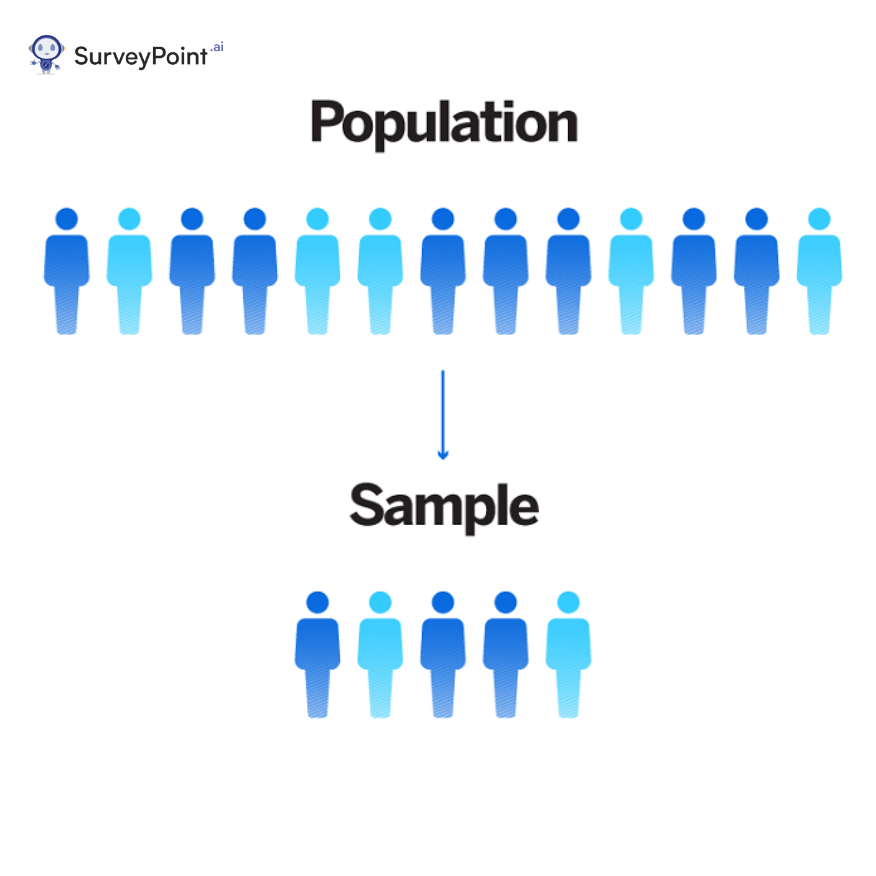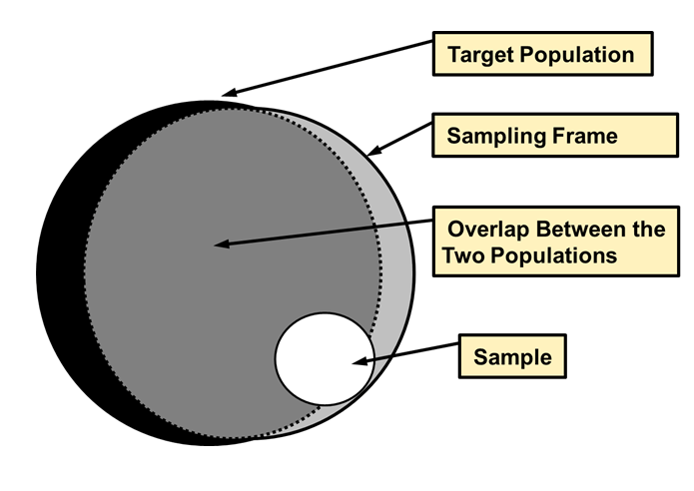
The survey method is one of the most used methodologies for compiling essential data. This data is used in market research, scientific studies, and more. However, surveys can range from small, localized ones to large surveys like the Census of India. Handling large amounts of data can be daunting at times, and this is where a sampling frame comes to the rescue.
Corporate or social surveys are often done to assess the population’s behaviour trends. As it is both economically and logistically impossible to reach out to every individual, organizations devise smaller groups of the population that reflect the entire population. This tends to yield similar results if the study was conducted on the whole population. Read on to understand all about it in detail!
Sampling Frame vs Population
We refer to the population as the universal or the entire set of individuals who are available for a survey to be performed. This population is seen as the total number of individuals irrespective of any distinctions among them.
A sampling frame in research is a subset of this population that is proportionally symmetrical to the characteristics of the whole population. The list of people will again be reduced to get a final list of those on which the study is to be conducted.
The sampling frame can be considered a special population segment that serves the study’s objectives. As a result, it is called a researcher’s list or device. Researchers can further divide the population within the sampling frame based on their needs. Generally, this is referred to as the population of interest.
The frame can cover anything from individuals to specific groups or institutions.
For example, to study the household demographics of the Western part of Washington DC, a group of towns having similar characteristics to that of the State’s demographics can be chosen as the sampling frame.
ALSO READ: Sampling Bias: A Threat to Accurate Analysis Sampling Frame vs Sample
A sample is the smallest set of people derived from the sampling frame. This sample goes through the study procedures in the hope that it is representative of the main population and that the right inferences are drawn.
A good sampling frame is a prerequisite for a good sample. For example, a specific number and type of families can be chosen from a group of towns for the study to get a sense of how everyday households function.
How Does A Sampling Frame Work?
- The first step is to measure the entire population. Having an idea of the whole population and its characteristic features gives great insight into an ideal sampling frame.
- Next, it is vital to identify all those who would directly influence the study results and make their list. For example, if a study is to be done on the female consumers of Maryland, then people of all other states will have to be ruled out.
- This is the list from which the researcher would later draw the final sample based on the more specific needs of the research.
- The last step is to identify the relevant segments of this list. The female consumers, by logic, would mostly fall in the age groups of 16-65 years. This induces the researcher to rule out all the other female populations from the list, which gives the sample for the research.
Therefore, the sampling frame in quantitative research is one important measure of ruling out the irrelevant sections of the population and making the sample more meaningful and economically derived.
ALSO READ: Judgmental Sampling: An Effective but Less-talked Method The Role of the Sampling Design
All researchers would want to carry out research applicable to most of the population. However, in practice, research is based on certain objectives, and rarely is there any research that is conducted on all the individuals in a population.
Furthermore, no research can fully satisfy or include the opinions and views of all those who form a part of the population. This is where the need for good samples steps in. However, good samples can only be made if the researcher has focussed on making a good sampling frame.
- Sampling frames are necessary to arrive at the most relevant population of interest. Without the research targets in mind, the studies would prove to be faulty and useless.
- They help researchers to stay up-to-date with the changes in the main population. Taking time while making the frame allows the researcher to study the people in specific contexts. It also allows the researcher to modify the preliminary sample before its launch.
- Sampling frames give room for specificity, and multiple types of frames exist, such as lists or area frames, etc.
- Suppose people in the sample refuse to participate in the study. In that case, the researcher can take another person with similar characteristics from the sampling frame.
ALSO READ: Defining Snowball Sampling— Methods, Advantages, and Disadvantages Problems Associated With Sampling Frames
While various researchers widely use sampling frames, it presents some challenges. Below are some of the most highlighted ones:
- Identifying who will and will not be part of the study’s database is difficult. Sometimes those outside the population of interest become a part of the frame.
- When sampling areas or institutions, it is difficult to identify the correct units which would be a part of the sample. This happens because sampling in groups gives little idea about the detailed characteristics of that domain. This might lead to inaccurate results.
- Sampling frames can give way to the repetition of individuals or institutions. Sometimes, individuals get listed twice under different heads of the frame. The researcher must consider these minor details when choosing the final sample.
ALSO READ: Studying Population Data: Meaning, Characteristics & Importance Wrapping Up
Sampling is an excellent method of identifying the population of interest. It sure has its demerits, but those can easily be avoided using the correct research methodologies and data collection methods. Leveraging a sampling frame can make your surveying easy and more meaningful. This will indeed enhance your overall research process as well!
Not Sure Where To Begin?
Explore our solutions to discover what is most important to your customers,
clients, and prospects. And best of all – it doesn’t take any coding!
Free Trial • No Payment Details Required • Cancel Anytime





